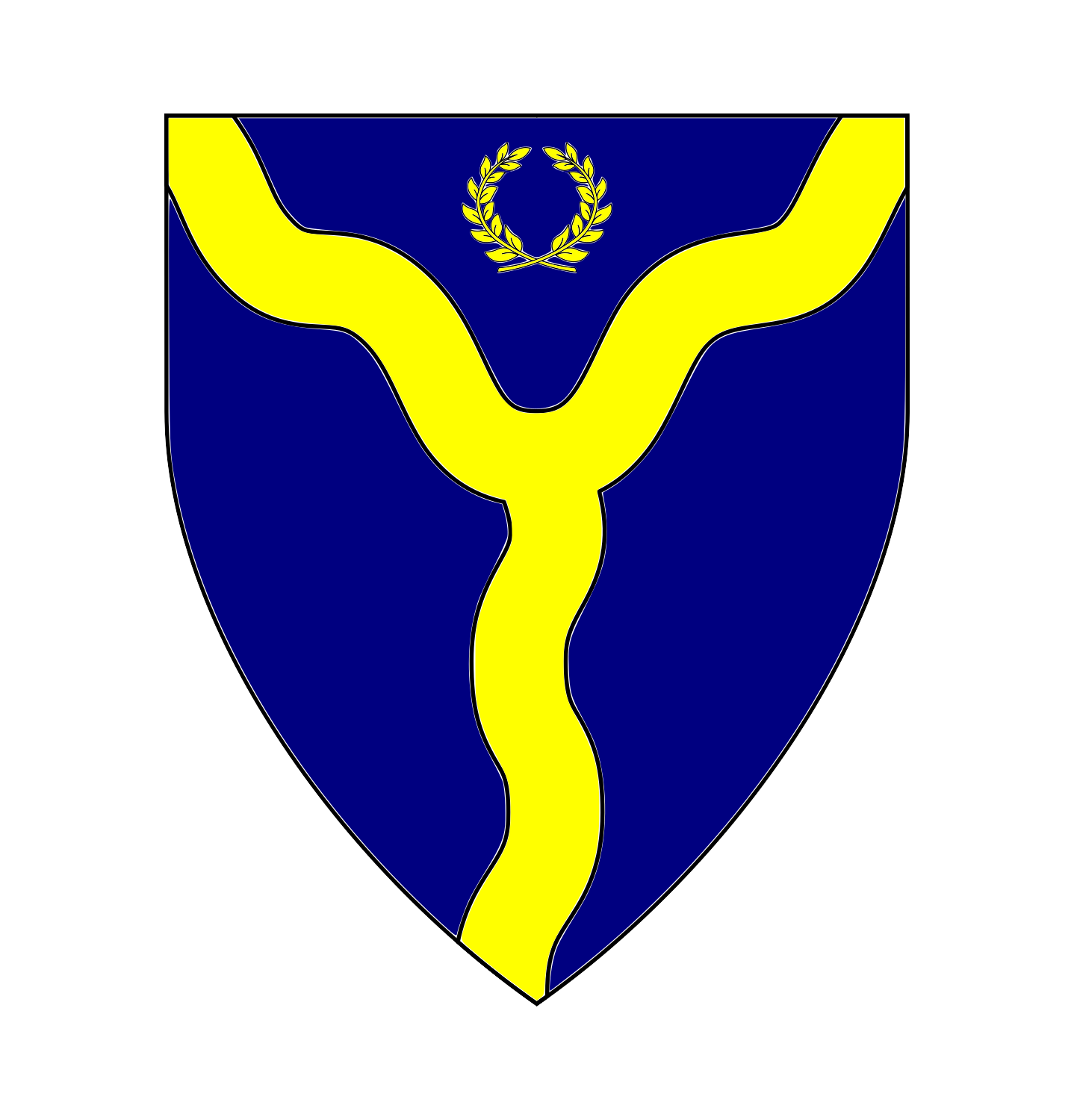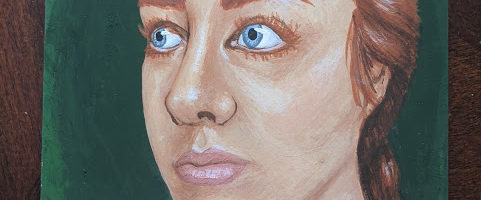This painting is a self-portrait made with homemade egg tempera paint. Egg tempera was a common medium of painting up through the end of the 15th century. The paint itself is created by combining a pigment with a binding agent and water. Pigments could be ground minerals, plants, or animal parts, or insects. The pigment would be mixed with water to create a paste, which can be stored for some time before use. For use in painting, a binding agent is needed to ensure that the pigment remains stuck to the surface after drying. Egg yolk was a common binding agent, and the one I use here. Tempera painting fell out of popularity in northern Europe earlier in the century, when Flemish painters began using oils. However, oils did not supplant tempera in Italy until the end of the 15th or start of the 16th century. There are some paintings created with a combination of tempera and oil paints, but there appears to be great difficulty in identifying the exact composition of these paintings. Labeling of paintings as “oil”, “oil and tempera”, and “tempera” are inconsistent with works past the 14th century. Tempera is typically referred to as having a “luminous” quality. However, it does not display darker shadow with as much “depth” as oil.
The beginning of the paint-making process was, for me, to purchase historical pigment powders. This painting was made using titanium white, yellow ochre, blue ridge hematite, alizarin crimson, chromium oxide, veridium, cobalt blue, and ivory black. These pigments were selected based on their accessibility in period, as well as their relatively lower level of toxicity (as opposed to lead white or naples yellow, which require very stringent safety precautions). I mixed these pre-powdered pigments with water to form a paste on my glass board, then added the binder. The binder was prepared by carefully holding an egg yolk in my hands and puncturing the outer sack, releasing the yolk without adding the membrane. This was combined with water and a few drops of vinegar as a preservative (though I stored mine in the refrigerator between uses). This yolk binder was added to the pigment paste to form the paint. Once the egg is added, the paint cannot be stored, so I attempted to mix only as much as I thought I would use during a painting session.
The process of painting in egg tempera was very different from using oils, which I had been more familiar with. Tempera dries very quickly, which means there is no chance to blend colors. The paint itself is somewhat transparent, as well. I found the process more similar to drawing with graphite than to painting with oil paint. I laid down basic blocks of color, then set to work making the shadows darker and the highlights lighter until I was satisfied with the contrast level. Each stroke was quite small, and was made with a very small brush (here a 0 round). Tempera painting is worked in small, crosshatching lines. These lines are semi-transparent, and visually blend together to form a somewhat-smooth transition. The painting isn’t sealed, as varnish tends to alter the color depth.
Portraiture itself became more popular toward the 15th century. I chose to paint a self-portrait in order to familiarize myself with the medium (this was my first piece in egg tempera). I skimped on details like clothing and background because I was feeling quite lazy, but historically, those things would have been used to convey status and power.
This painting was done on a 5”x7” clayboard. Historically, these paintings would have been done on a rigid surface, such as a seasoned plank, covered in gesso made from a binder such as rabbit skin glue and a substance called “whiting” in my translation of “Il Libro dell’ Arte”. I am hoping, in future projects, to make my own board and gesso.
References: “Il Libro dell’ Arte”, translated by Daniel V. Thompson; “The Practice of Tempera Painting” by Daniel V. Thompson; writings by Koo Schadler https://www.kooschadler.com/techniques.htm
Blog: Process photos available on my blog https://philippadyvill.wixsite.com/creations
Comments:
I welcome comments and constructive feedback!
Learn more about Philippa at https://wiki.eastkingdom.org/index.php?title=Philippa_Dyvill


Return to see more Falling Leaves Arts and Sciences Displays


I really like hearing about how the paint handles differently than oils. Thank you for also telling us how you plan on growing this project. I’d love to see the next iteration with period appropriate base to the painting. Also it would be neat to see another portrait with the clothing and bling. But don’t get rid of this, keep it for a progression. I think it’s great to see how an artisan’s skill evolves. Although that being said, this is amazingly skilled by itself. Thank you for sharing!
I don’t often see tempera works entered in displays–love it! Nice job!
Amazing work!! The painting on its own is impressive, so I’m absolutely floored that you made the paints as well! Thank you for sharing